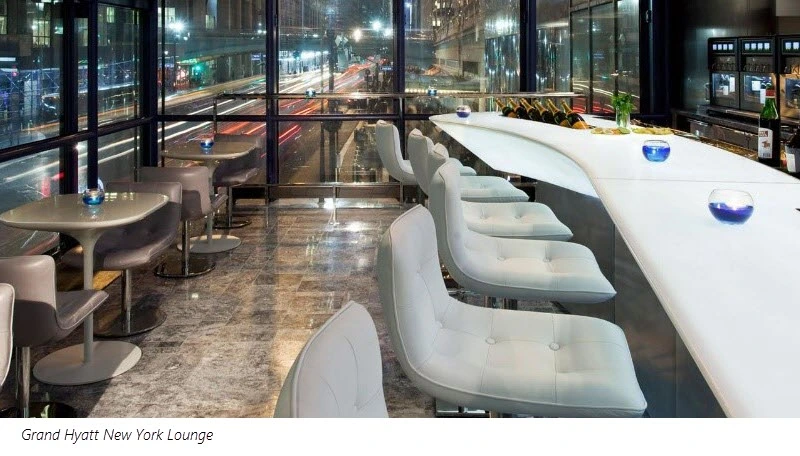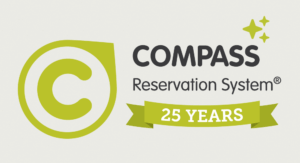In our Chicago office, company-provided dishes were randomly disappearing. Plates, silverware, it was the funniest thing that the kitchen seemed to be this Bermuda Triangle sucking down ceramics. Last fall, one of the designers, Kyle, got hitched and graciously donated his old dishes and flatware to our office. Since then, not a bowl has bounced nor a fork fled. It appears everyone is taking great care to wash and return each dish used and treat this new collection with gentle maintenance and respect. There’s a sense of duty that comes with something on loan to us, to nurture it and return it in the same condition as it was received.
This parallels the social responsibility companies are facing now. As consumer behavior shifts—realizing our environment and resources are also on loan…and that money talks—shoppers are now advocating for businesses whose values align with their own. Consumers have the flexibility to be discerning while competition grows and companies increasingly vie for their attention.
Corporate social responsibility (CSR) isn’t a trend, it’s a business model redefining how companies are evaluating, spending, building, and flourishing. A 2017 CSR study1 of 1,000 Americans revealed that 88 percent are more loyal to companies that support social and environmental issues, and 89 percent would switch brands to those associated with a good cause, given similar price and quality. “Americans expect companies to not only improve their business practices…but to be a force for change in broader society.”1
”When it comes to reported actions, consumers see their wallets as the most effective way to drive change – whether that’s making a donation, buying a product with a social or environmental benefit or boycotting a company that steps out of line,” the study points out. Organizations dropping the ball on CSR will simply fall behind.
As a celebration of Earth Day, but also an industry introspection at a time when change is in our hands, we’ll be highlighting by region how some of our partners are manning up and landing CSR on the map.

Focusing on event space, totaling more than 85 million square feet in the U.S.,2 and hotels—which account for more than five billion square feet3 and, unlike most commercial properties, consume resources 24/7—and there are countless opportunities for them to reassess and reduce their carbon footprint.
Let’s start with New York. “New York City is one of the largest and most diverse travel and tourism markets in the Western Hemisphere, and demand for hotel rooms has historically kept up with supply.”4 Visitors to NYC grew from 47m to 60.7m from 2007 to 2016—an increase of nearly 30 percent!—and the number of hotels have jumped from 350 to 630 in that same period. Whoa, right?
Hotel occupancy in New York was the highest occupancy in the nation’s top 25 lodging markets, at 85 percent. That means “eight out of ten rooms are being sold every night for 11 months in a row,” says Jan Freitag, of the hotel research firm STR.5
How is the hospitality industry effectively becoming leaders of change, starting with its impact on the environment? Linen cards—reminding guests to reuse their towels or hang that Do Not Disturb sign a little longer—are fantastic first introduction to going green, but there’s so much more going on under the hood.
Seventeen hotels have taken up Mayor Bill de Blasio on his NYC Carbon Challenge, committing to reduce greenhouse gas emissions from their buildings by 30 percent over a 10-year span.6 As a whole, the program would reduce citywide emissions by 515,000 metric tons of carbon dioxide, the equivalent to removing 100,000 cars from the road.
The Grand Hyatt New York is installing exhaust controls in its kitchens to minimize energy expended when stoves are not in use and 16,000 LED bulbs throughout the property. Additionally, the hotel’s investing in a new HVAC system, operating on demand-based ventilation. These three modifications will cut down the hotel’s carbon emissions by 2,400 metric tons annually.7 That’s over 450 cars, gone!

The Westin New York at Times Square is also retrofitting the entire building with LED bulbs and sensors, low-flow showerheads and energy-efficient boilers and coolers.
Hudson, a boutique New York hotel, calls itself Glamorously Green. “Now is the time for us to be daring and innovative as we embrace a greener lifestyle…Gone are the days of a typecast granola green.”8 This is demonstrated by such initiatives as donating mattresses to charity organizations worldwide; maintaining environmentally responsible practices in its F & B outlets, including evaluating seasonal menus, featuring locally-sourced ingredients and not offering over-fished species; and donating unused soap and toiletries to Clean the World’s soap recycling program, supplying children in need with amenities to keep clean and become less susceptible to infection.8
So where are these travelers going? Well, the Javits Center, located on Manhattan’s West Side, attracts 2m visitors annually. The space hosts more than 175 events, 40,000 exhibiting companies, and 5,000 employees each year. “At the Javits Center, sustainability has become a critical focus in an effort to improve the quality of life for our employees, visitors, the surrounding neighborhood and its ecosystem.”9

The Javits Center installed a 7 acre green roof, sustainable pest management, and facilitated a post-show donation program, among other practices. Talk about initiating change! The green roof is the second largest of its kind in the U.S., and has actually created a new ecosystem of birds, honey bees, bats, and butterflies! The roof has also prevented nearly 7m gallons of storm water run-off annually, significantly reducing heat gain and energy consumption, because puddles don’t just affect your favorite Vince Camutos.
These industry leaders are not our only meeting and hospitality partners in New York, or nationwide, making changes in their sustainability practices. Swing by again on Tuesday, April 24th, to hear how the Midwest lands on the map! Maybe you’ll recognize a familiar name or uncover new ways to embody CSR with poise. See you again next week!
About Clean the World
Clean the World is a nonprofit organization, partnering with 5,000 hotels internationally to recycle soap from nearly one million hotel rooms daily, distributing them to families, schools, and organizations in need.10 Meeting planners and travelers frequently consider sustainability practices when booking a hotel. Recycling with Clean the World is a great way to achieve corporate social responsibility goals and attract more guests. Learn how to become involved with Clean the World.11
1 “2017 Cone Communications CSR Study” Cone Communications, last modified May 15, 2017.
2 “Convention Center Directory” Cvent Inc., last modified 2015.
3 “LEED® In Motion: Hospitality” US Green Building Council, last modified Feb. 2016.
4 “NYC Hotel Market Analysis: Existing Conditions and 10-Year-Outlook” New York City Department of Planning, last modified 2017.
5 Jones, Charisse, “Hotel building boom bringing 100,000 new rooms to U.S cities” USA Today, Jan. 10, 2016.
6 “The New York City Carbon Challenge” NYC Mayor’s Office of Sustainability, Green Buildings & Energy Efficiency, last modified 2018.
7 Vora, Shivani. “New York Hotels Make a Green Pledge” The New York Times, Jan. 19, 2016.
8 “Glamorously Green” Morgans Hotel Group, last modified 2018.
9 “Sustainability Report 2017: Greening America’s Busiest Convention Center” Javits Center, June 6, 2017.
10 Springer, Kate, “The company cleaning up the world’s biggest hotels,” CNN, May 1, 2017.
11 “Recycle Soap. Save Lives. Protect the Environment” Clean the World, last modified 2018.









